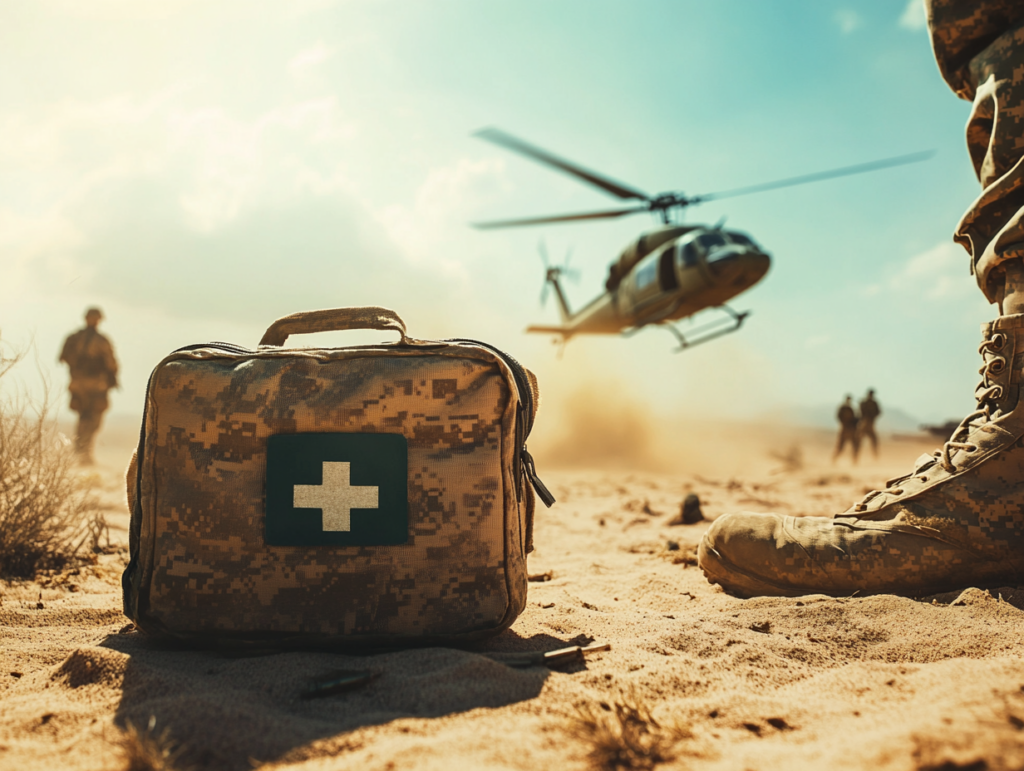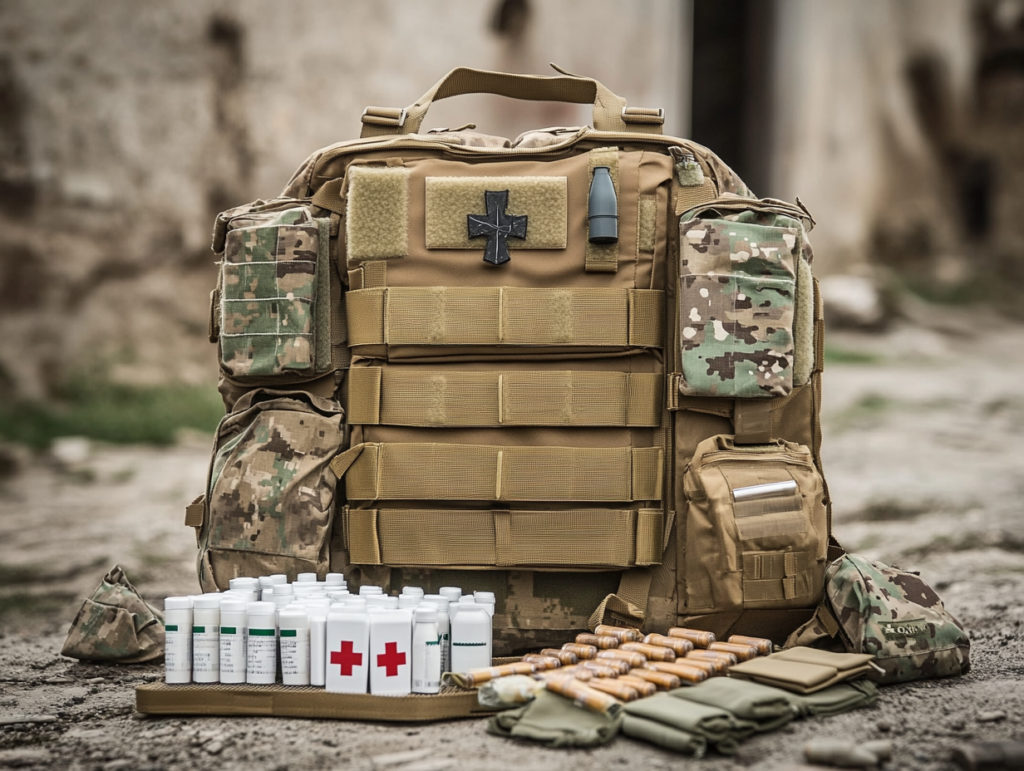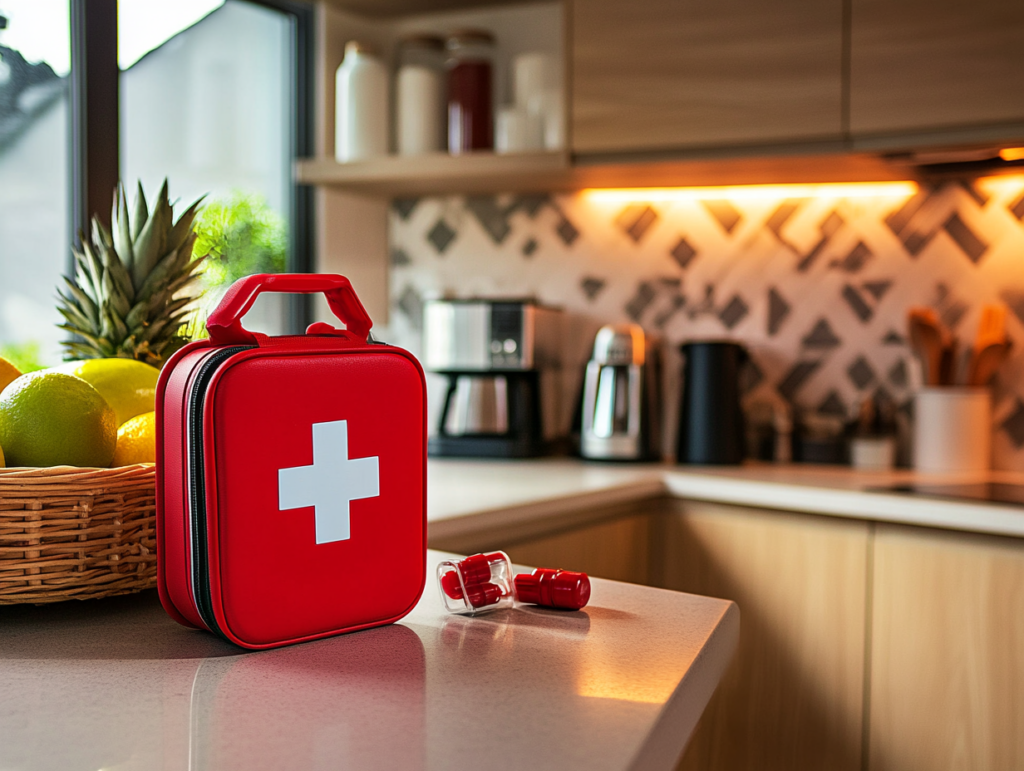- Individual First Aid Kit (IFAK): Personal Tactical Medical Gear
- Tactical Medical Backpack: Large Medical Kit for Battlefield Medical Personnel
- Team Tactical First Aid Kit: Shared Medical Gear for Squad-Level Care
- Battlefield Emergency Rescue Kit: Advanced Gear for Special Operations or High-Intensity Battlefields
In modern military operations, medical capability is one of the critical factors that determine a soldier’s survival. Military tactical first aid kits, as the core medical equipment on the battlefield, provide immediate care to injured soldiers, preventing further deterioration of their condition and even saving lives.
These kits are not all the same; they are classified into several categories based on the user and operational environment, including the Individual First Aid Kit (IFAK), tactical medical backpack, team tactical first aid kit, and battlefield emergency rescue kit.
This article will explore these four types of first aid kits in detail, covering their definitions, contents, uses, and importance in combat, providing readers with a comprehensive understanding of the diversity and professionalism of military medical gear.
Individual First Aid Kit (IFAK): Personal Tactical Medical Gear
The Individual First Aid Kit (IFAK) is the basic medical equipment carried by each soldier. Its design aims to provide soldiers with the ability to self-administer first aid or assist others, especially in critical moments when they are injured on the battlefield and awaiting medical personnel. IFAKs are typically compact, lightweight, and easy to secure to a soldier’s tactical vest or belt, ensuring quick access in emergencies.
Contents and Functions
A typical IFAK includes the following core items:
- Tourniquet: Used to quickly control severe bleeding in limbs, such as from gunshot or blast wounds causing arterial rupture.
- Hemostatic dressings: Bandages containing clotting agents to accelerate blood clotting, useful for wounds where a tourniquet cannot be applied.
- Pressure bandage: Combines bandaging and compression to stop bleeding, ideal for treating open wounds.
- Chest seal: Used to treat chest puncture wounds and prevent air from entering the chest cavity, which could lead to a pneumothorax.
- Nasopharyngeal airway: Keeps the airways open for unconscious casualties.
- Medical scissors: Used to quickly cut clothing and expose wounds.
- Gloves: Protects the rescuer and maintains hygiene.
These items are selected based on the most common life-threatening injuries on the battlefield, such as severe bleeding, airway obstruction, and pneumothorax. Soldiers receive specialized training to learn how to use the IFAK under high-pressure conditions.
For example, when a soldier is shot in the leg and blood is spurting out, they can quickly pull out the tourniquet from the IFAK and secure the wound within seconds, preventing excessive blood loss. This self-rescue capability has proven to significantly reduce preventable death rates in modern warfare.
Combat Scenario
Imagine a soldier on patrol who is ambushed and hit in the abdomen by shrapnel. They quickly open the IFAK, apply a pressure bandage to the wound, and their comrade assists with using hemostatic dressings to control the bleeding, buying valuable time for further medical intervention. This scenario highlights the indispensable role of IFAK in individual operations.
Tactical Medical Backpack: Large Medical Kit for Battlefield Medical Personnel
The tactical medical backpack is designed for battlefield medical personnel. Compared to the IFAK, it is not only larger in capacity but also more comprehensive in its contents, suitable for dealing with various injuries and multiple casualties. Medical personnel are typically members of a small unit who have received advanced medical training and are responsible for stabilizing casualties and preparing them for evacuation on the battlefield.
Contents and Functions
The tactical medical backpack typically includes:
- All the basic items from the IFAK: Such as tourniquets, bandages, etc., but in larger quantities.
- Intravenous fluid sets: Containing saline or plasma for treating hypovolemic shock.
- Splints: Used to immobilize fractures and prevent further damage.
- Advanced airway management tools: Such as laryngoscopes or intubation equipment to secure the breathing of critically injured patients.
- Medications: Including painkillers, antibiotics, and antihistamines.
- Burn dressings: For treating injuries caused by explosions or chemical weapons.
- Diagnostic tools: Such as stethoscopes and blood pressure cuffs for initial injury assessment.
The backpack design prioritizes practicality, often featuring a modular structure with multiple compartments to help medical personnel quickly find what they need. Some backpacks even come with detachable smaller bags tailored for specific injuries, such as burn care or fractures.
Combat Scenario
In an ambush, roadside bombs explode, injuring several soldiers. The medical personnel, carrying the tactical medical backpack, rush to the frontlines, first administering fluids to a soldier who is hemorrhaging and using a chest seal and airway tools to treat another soldier with a chest injury.
The ability to handle multiple tasks makes the tactical medical backpack a core piece of equipment in complex battlefield environments.
Additionally, medical personnel often work under gunfire, so the backpack’s portability and durability are crucial. Modern designs also consider waterproof and tear-resistant materials to withstand harsh environmental conditions like deserts or jungles.
Team Tactical First Aid Kit: Shared Medical Gear for Squad-Level Care
The team tactical first aid kit is designed as shared medical resources for a squad or platoon-level unit. It falls between the individual IFAK and the tactical medical backpack, meeting the needs of multiple people without being as complex as a full medical backpack. It is typically carried by a designated member of the squad or stored in vehicles for use by the entire team.
Contents and Functions
The team tactical first aid kit may include:
- Additional basic first aid supplies: Such as more tourniquets, bandages, and disinfectants.
- Splints and cold packs: For treating sprains, fractures, and other non-life-threatening injuries.
- Burn care kits: To handle small-scale burns.
- Basic medications: Such as pain relievers or antihistamines.
- Eye care kits: For treating eye injuries from dust or foreign objects.
Unlike the IFAK, the team first aid kit serves a broader range of purposes, not just emergency life-saving but also managing minor injuries. For example, when the squad is on a long march and one soldier twists an ankle, the splints and cold packs from the team kit can be used to prevent the injury from worsening.
Combat Scenario
During a night reconnaissance mission, one soldier scratches their arm on a branch, while another suffers mild frostbite after prolonged exposure to cold.
The squad leader quickly retrieves bandages and a warming blanket from the team first aid kit and treats the injuries, ensuring the mission continues. This flexibility makes the team first aid kit an ideal supplement for small unit operations.
Battlefield Emergency Rescue Kit: Advanced Gear for Special Operations or High-Intensity Battlefields
The battlefield emergency rescue kit is the most advanced type of military tactical first aid kit, designed specifically for special operations or high-intensity combat scenarios.
It is used in extreme situations where medical evacuation is hindered, and complex treatment is required on-site, typically carried by specially trained medical personnel such as special forces medics.
Contents and Functions
The battlefield emergency rescue kit may include:
- Portable defibrillator: For treating cardiac arrest.
- Surgical tools: Such as hemostats and suturing kits for emergency wound care or bleeding control.
- Chest decompression needle: For treating tension pneumothorax.
- Advanced hemostatic agents: Such as powdered clotting agents.
- Blood transfusion equipment: In some cases, used to provide blood replacement.
- Strong painkillers: Such as morphine injectors for severe pain relief.
These tools allow medical personnel to perform minor surgeries on the battlefield. For example, during a behind-enemy-lines mission, if a special forces soldier is shot in the abdomen, the rescue kit’s tools allow the medic to clean the wound, stop the bleeding, and stabilize the casualty until a helicopter arrives.
Combat Scenario
During a high-risk raid, a special forces team encounters fierce resistance, and one member is shot in the chest. The medic uses the chest decompression needle from the emergency rescue kit to relieve tension pneumothorax and administers IV fluids to maintain vital signs.
The casualty is then safely evacuated. This scenario highlights the value of the battlefield emergency rescue kit in extreme environments.
Conclusion
The classification of military tactical first aid kits reflects the refinement and professionalism of military medicine. From the immediate self-rescue capabilities of the individual first aid kit to the advanced treatment options in the battlefield emergency rescue kit, each piece of equipment plays a crucial role in specific combat situations.
However, the equipment itself is only part of the equation—training for soldiers and medics is equally essential. Mastering the proper use of these kits can turn the tide in life-or-death situations.
As warfare evolves and technology advances, the design and contents of tactical first aid kits continue to improve, always aiming to protect life as the highest priority. Whether for ordinary soldiers or elite special forces, these small medical kits serve as the “lifesavers” on the battlefield.


